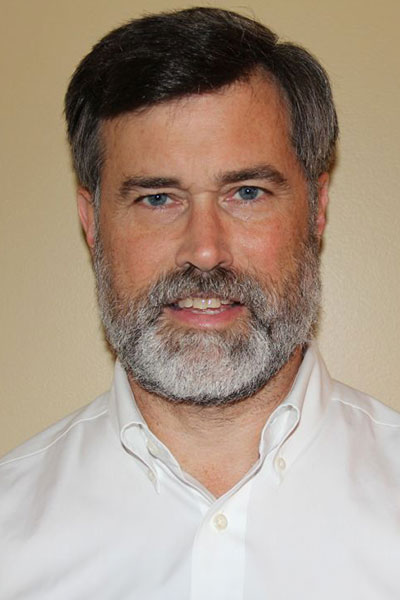
If nothing else, COVID-19 strengthened our strong, professional relationship with respiratory therapy. As pulmonary, critical care, and sleep physicians, we rely on respiratory therapists (RTs) to manage our patients who are critically ill and ventilated. They care for our patients with obstructive lung disease, working as COPD navigators and educators. RTs staff our pulmonary function labs and support our patients on home ventilators. In some hospitals, they independently intubate and work as extracorporeal membrane oxygenation specialists.
While COVID-19 highlighted the relationship between pulmonary providers and RTs, it also exacerbated an evolving RT staffing crisis. Hospital RT job vacancies, already high, surged by 31% in 2020.1 The increased volume and patient acuity strained already tenuous staffing models, contributing to high burnout rates.2 Despite the “resolution of the COVID-19 pandemic” (as many are calling it), hospital operating margins have not recovered, pressuring many health care systems to limit staffing expenses, perpetuating staffing shortfalls.3 The resulting burnout, combined with an aging workforce, is substantially shrinking the workforce at a time when demand for RTs is increasing.
The US Bureau of Labor Statistics estimates a 13% increase in RT positions between 2023 and 2033, driven by population changes and increasing care complexity.4 It predicts there will be 8,200 new positions yearly, making it one of the fastest-growing allied health specialties. Unfortunately, RT entry into practice programs currently cannot meet this demand. The Commission on Accreditation for Respiratory Care reported 6,343 graduates from RT entry into practice programs in 2023, down almost 26% from the peak in 2012.5 Since only 90% of RT graduates enter the workforce, the yearly deficit is almost 2,500 therapists.
The news is not all bad. The number of graduates has increased for the last two years, up 6% from a 2021 nadir. Also encouraging is the explosive growth in RT programs—37 new programs (9.3%) since 2018. As of December 2024, there were 40 additional programs navigating the accreditation process. Another encouraging trend is the growth of Degree Advancement (DA) programs. Since 81% of RT entry into practice programs are at the associate level, DA programs are critical to build the workforce needed to manage the increasingly complicated health care needs of our patients.5
What can we do in the interim? As Paul Romer, the Stanford economist and Nobel laureate stated, “A crisis is a terrible thing to waste.”6
We should begin by reassessing how RTs work in our institutions. Despite considerable evidence—now more than 20 years old, documenting improved clinical outcomes at reduced cost with RT protocol-directed care—a sizable proportion of care delivered is still physician-directed.7,8 In a recent performance improvement project, deimplementing low-value nebulized treatments using a therapist-driven protocol reduced treatments by 85% and saved the equivalent of four full-time employees.9 Using evidence-based, therapist-driven protocols is both cost-effective and can potentially reduce staffing needs by eliminating low-value care. We should also encourage our institutions to investigate innovative ways to engage students, including joining educational consortiums; participating in HOSA events, scholarships, and apprenticeship programs; as well as opening our workspaces to support training opportunities for RT students.10
Two websites, MoreRTs.com and Be-an-RT.org, sponsored by RT professional organizations, provide more information on the crisis and resources for use in recruiting students.
References
1. Data Brief: Health Care Workforce Challenges Threaten Hospitals’ Ability to Care for Patients. American Hospital Association. October 2021. Accessed April 10, 2025.
2. Miller AG, Roberts KJ, Smith BJ, et al. Prevalence of burnout among respiratory therapists amidst the COVID-19 pandemic. Respir Care. 2021;66(11):1639-1648. doi: 10.4187/respcare.09283
3. Melnick G, Maerki S. Post-COVID trends in hospital financial performance: updated data from California paint an improved but challenging picture for hospitals and commercially insured patients. Health Aff Sch. 2023;1(3):qxad039. PMID: 38770166; PMCID: PMC11103726. doi: 10.1093/haschl/qxad039
4. Occupational Outlook Handbook: Respiratory Therapists. US Bureau of Labor Statistics, US Department of Labor. Accessed April 1, 2025.
5. 2024 Report on Accreditation in Respiratory Care Education. Commission on Accreditation for Respiratory Care. February 15, 2025. Accessed April 1, 2025.
6. Rosenthal J. A Terrible Thing to Waste. The New York Times Magazine. July 31, 2009. Accessed April 12, 2025.
7. Stoller JK. The effectiveness of respiratory care protocols. Respir Care. 2004;49(7):761-765.
8. Shaw RC Jr., Benavente JL. AARC Human Resource Survey of Respiratory Therapists. December 2020. Accessed April 7, 2025. https://www.aarc.org/wp-content/uploads/2018/06/aarc-hr-study-rt.pdf
9. Fleming K, George JL, Bazelak SJ, et al. Optimizing respiratory therapy resources by de-implementing low-value care. Respir Care. 2023;68(5):559-564. doi: 10.4187/respcare.10712
10. Personal communication, Dr. Thomas Smalling, PhD, RRT, Chief Executive Officer, CoARC, 12 April 2025